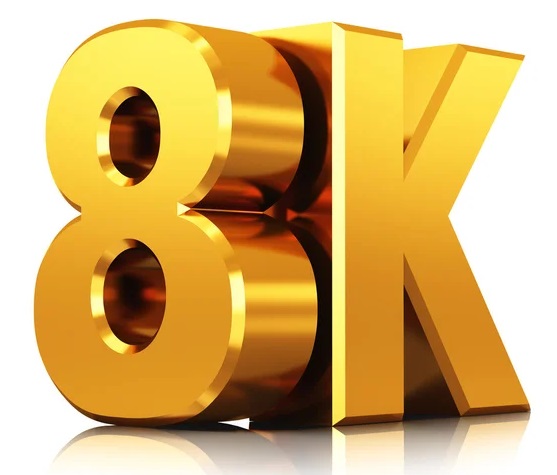Formula 1 News: Series has been planning 8K TV since 2021 (Update)
Formula 1 has been testing 8K TV resolution since 2021. 4k isn’t good enough, according to Tata Communications.
In a significant leap for Formula 1 broadcasting, the sport is set to transition to 8K resolution, promising an unparalleled visual experience. This upgrade, in partnership with Tata Communications, marks a new era of ultra-high-definition viewing, far surpassing the current 4K broadcasts.
Dhaval Ponda, Vice President and Global Head of Media & Entertainment Business at Tata Communications, highlights the inevitability of this evolution.
“What happened gradually over the last couple of years is audiences globally, in almost every single part of the world, have got used to having content in 4K. And for the young generation, this is where the bar is now set,”
he told Autosport.
“I think that the transition to 8K is going on actually quite well in the industry. And it will definitely happen because, for the current generation that has got used to 4K, for them 8K will really offer a finer detail and a higher level of quality.”
“It is a step up. Again, if you go back to the days of HD and when things moved into full HD, I think that change was fairly significant. And when we went from full HD to 4K, I think it was visibly better quality, as you have more depth and more detail.
“Similarly for 8K, it will capture so much more raw detail that it will be stunning. If you look at a shot of an ocean racing competition in 8K, it is sublime.”
“Change is never isolated. It is never led by a single organization. It is always a group of companies that work together to deliver that change for viewers globally.
“So we are actively working with technology partners, but also with major sports broadcasters and sports federations to be able to deliver this change to the audience.”
“Our investment has always been on how can we shave off that extra second, half a second or even milliseconds of live content that is going across thousands of miles. Reducing the lag involves a host of things.
“It is across working with better hardware, and improving the processing power of computers. But one of the ways in which we are looking at to reduce the lag and improve the quality of content is with investment into edge-based infrastructure.”
“Right now most of the content consumption across the primary screen or TV screen, the digital screens – so laptops, tablets, mobile phones – and the screens at the venues are all out of sync.
This is because the technology is fairly fragmented across various modes of content consumption. So we have worked with some of the leading digital players in order to deliver a synchronised experience, as we call it, where regardless of the screen – you could be at a venue looking at a trackside screen, a digital screen and a primary screen at the same time – they would all be in sync.”
March 8, 2021
F1’s Director of Media Rights Ian Holmes has indicated that there are plans in place to trial HDR and 8K resolution cameras during the 2021 Formula 1 season.
Formula 1 is set to trial 8K and HDR (High Dynamic Range) broadcasts later this year, F1’s Director of Media Rights Ian Holmes has confirmed.
The sport has been increasing the quality of its world feed broadcast quality over the past decade, switching to high definition widescreen in 2011. Then, in 2017, FOM began offering a 4k broadcast which was made available to interested broadcasters.
With other sports, such as the NFL in the United States, evaluating and trialing ever-higher resolution broadcasts, there are plans in place to begin that same evaluation in Formula 1.
“One of the things that we’re specifically looking at HDR [8K], high definition, efficient range, which is very effective for fast moving objects,” Holmes explained to selected press.
“We will be conducting tests this year. I think that is potentially the next stage of an offering. We’re looking at the development of that side of technology in order to serve our broadcast partners.
“We need to be at the forefront of that. I remember, back in the day with Bernie [Ecclestone], let’s just say we were a little bit slow to adopt some of those elements. Then ironically, [we] were super fast to go to where we are now.”
Holmes went on to explain that there are still other factors to be taken into consideration, with the main concern being a lack of consumers who are yet to move onto devices capable of displaying such high resolution imagery.
“We’re also going to look at who could take it,” Holmes said. “If we had it tomorrow, there’d be very few people who could take it. The other thing is sometimes you produce this wonderful technology, and the broadcastability, but the people’s devices are not capable. So there is that sweet spot.
“We are always looking at what is our bread and butter, the feed has got to be as good as it can be from every perspective. The Olympics always pushes the boat out a little bit. Once every four years, or two years through the Winter Olympics.
“Quite a lot of technology comes through from that. So I’m quite interested, especially with it being in Japan if it happens, that’s quite an interesting sort of thing to pay attention to. But, certainly I think for us, HDR is something that we’re quite excited about.” RacingNews365
An example of HDR resolution can be seen on the video below.
